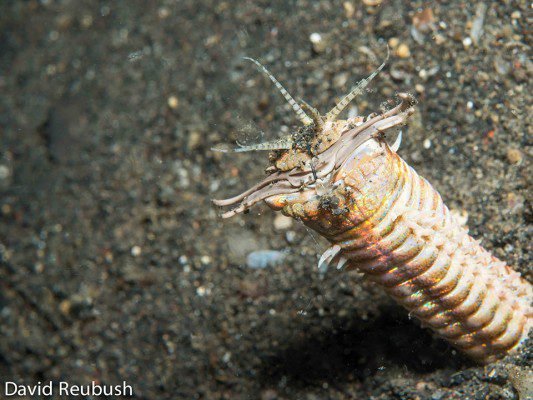
Imagine a Bobbit worm as an ocean ninja. With its ability to camouflage and strike swiftly, it captures prey with a snap, making it a master of its environment. However, not every environment suits this worm’s lifestyle. Brackish water, which is a mix of fresh and saltwater, poses unique challenges. So, can our ocean ninja adapt to this blend? Here’s what you need to know about these mysterious worms, their habitat preferences, and the impact of water salinity on their survival.
Understanding Bobbit Worms: A Quick Overview
To get to the bottom of whether Bobbit worms can thrive in brackish water, it’s essential to first understand what these worms are all about. Bobbit worms belong to the family *Eunicidae* and can grow to impressive lengths of up to 10 feet! They’re often found buried in the sandy or muddy seafloor. With a segmented body, they have powerful jaws that help them capture prey efficiently.
You might picture Bobbit worms as something out of a sci-fi movie, but they play a crucial role in their ecosystems. They help control populations of smaller fish and other marine critters. This means they contribute to the balance of their marine environments.
However, these worms aren’t just mindless hunters. Their survival depends heavily on their surroundings, particularly water salinity, which leads us to the question: can they handle a mix of fresh and saltwater?
What Is Brackish Water?
Before we discuss whether Bobbit worms can survive in brackish water, let’s clarify what brackish water actually is. Brackish water is a hybrid between freshwater, like rivers and lakes, and saltwater found in oceans. It typically features a salinity level between 0.5 and 30 parts per thousand (ppt).
This unique blend creates diverse ecosystems, often found in places like estuaries, mangroves, and tidal marshes. These environments are teeming with life, providing a rich habitat for many species. Some fish and plants thrive in these conditions, while others can struggle to adjust.
The fluctuation in salinity can be a stressor for many marine species. Just like humans have a tolerance for certain environments, so do aquatic creatures. Let’s explore how this applies to Bobbit worms.
Bobbit Worms and Salinity: A Closer Look
Now that we understand what brackish water is, let’s examine how it affects Bobbit worms. These worms typically thrive in fully marine environments rather than freshwater or brackish settings. Their biology is adapted for life in seawater, which helps maintain their bodily functions—like osmoregulation.
Osmoregulation is the process that allows animals to balance the salts and water in their bodies. Since Bobbit worms have evolved in high-salinity environments, sudden changes can throw them off balance. This means that while they can tolerate slight changes in salinity, the significant fluctuations associated with brackish water can be problematic.
It’s not just about salt levels, though. Bobbit worms also need specific temperatures and nutrient availability to thrive. Brackish environments can sometimes lack these ideal conditions, making sustained survival a challenge.
Can Bobbit Worms Adapt to Brackish Environments?
You might be wondering if Bobbit worms can adapt to brackish water. While adaptability is a hallmark of many species, Bobbit worms exhibit limited flexibility when it comes to salinity levels. Their specialized physiology means they cannot easily adjust to the less consistent salinity of brackish waters.
In some cases, temporary exposure to lower salinity might not be fatal. However, long-term presence in such an environment could lead to stress, and eventual death is a real possibility for these creatures. Think of it this way: while some fish can adapt to brackish conditions, Bobbit worms are like that friend who insists on ordering the same dish every time at a restaurant—they prefer their familiar, salty ocean!
WhyThis Matters for Aquarists
So, if you’re an aquarist or simply fascinated by marine life, what does this mean for you? If you’re considering setting up a brackish tank, think twice about introducing Bobbit worms. They thrive in setups that mimic their natural habitats—deep, salty waters.
Instead, if you’re keen on creating a brackish environment, focus on species that are naturally suited to that ecosystem. Many colorful fish and invertebrates (like certain shrimp and crabs) can flourish in brackish waters, providing a lively and vibrant aquarium space without risking the health of sensitive creatures like Bobbit worms.
In summary, Bobbit worms are incredible creatures but are not a good fit for brackish water environments. Their need for stable salinity levels and specific habitat conditions means they’ll thrive best in the saltwater habitats they call home.
If you’re an ocean enthusiast or an aquarist, understanding the needs of different species is key to creating a happy and healthy environment. As with many aspects of life, the right fit makes all the difference. So, next time you think about Bobbit worms, remember their ocean ninja status and the environments where they truly shine!
